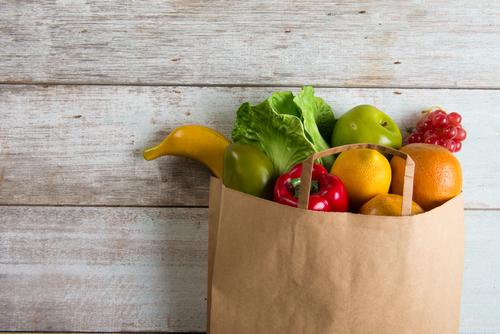
The USDA announced last week that on-line providers of fresh food would begin participating in a pilot study with the Supplemental Nutritional Assistance Program (SNAP). The retailers include Amazon, FreshDirect, Safeway, ShopRite, HyVee, Hart’s Local Grocers and Dash’s Market.
The primary purpose of SNAP is to prevent hunger and promote food security using the USDA’s Thrifty Food Plan, a diet minimizing cost while satisfying nutritional requirements and limits, as the model for determining a financial benefit. SNAP provides electronic benefit transfer cards (EBT) to redeem eligible food items at nearly 250,000 retailers with few restrictions.
SNAP eligibility is based upon financial need (income less than 130% of poverty level). In 2016 it provided benefits to 44.2 million people. SNAP provided roughly $66 billion in benefits with administrative costs of about $8.4 billion split equally between the federal government and states. (Monthly benefits in 2016 approximately $125/person)
SNAP because it is based upon income has demographic and health features of that population. SNAP participants are less likely to be married, have lower levels of education, family members with functional limitations, children with special needs, and more contact with the medical system. When we focus on health concerns, SNAP participants are more likely to have been diagnosed with “ADD, asthma, a vision problem even with glasses or blindness, diabetes, heart attack, stroke, or ulcer. They are also more likely to have recent back problems or frequent migraines.” [1]
Most research has shown SNAP’s reduction in food insecurity but little impact upon diet. Like most federal assistance programs, an educational component, financed by the federal government, is available to the states. In 2014 $400 million was available, and all states participated. “Under SNAP regulations, States have the option to provide nutrition education to SNAP participants through the SNAP-Ed program. This is the primary channel through which SNAP attempts to influence food choices of participants. The major goal of the SNAP-Ed program is to increase the likelihood that persons eligible for SNAP will make healthful food choices within a limited budget and choose physically active lifestyles consistent with the Dietary Guidelines for Americans.” [1] There is no evidence that these programs have had significant impacts.
A study commissioned by the USDA explored the eating behavior of SNAP participants captured in the National Health and Nutrition Examination Survey (NHANES) from 2007-2010. They found SNAP participants made healthy and unhealthy choices:
- Unhealthy – less likely to choose discrete whole grain items, raw vegetables, fruit. They were more likely to choose whole milk and soda (and more frequently regular rather than diet soda)
- Healthy – less likely to sweets and desserts, salty snacks and to add fats and oil to foods
The study recommended targeting consumption of whole milk, fruits and vegetables, whole grains and soda/empty calories for education.
Education is best provided when it is needed. A brochure does not work. But on-line retailers have already demonstrated the power of just-in-time education; it is the recommendation system pioneered by Amazon. What if when food was selected on-line, meaningful substitutions were offered? Here is a “low-calorie” or “heart healthy” alternative.” Why not include a dietician algorithm? In fact, if the SNAP participants were willing to share some health information, then dietary suggestions around diabetes and heart disease could be provided. And on-line participation has two additional hidden advantages. Retailers already test their recommendations, changing how and when suggestions are made to increase the involvement. And the cost of the algorithm when scaled to this population is nil; I'm sure that it would be far less costly than the ineffective education we already provide. Developing a dietary algorithm is an opportunity for Amazon to give back, we should encourage that pursuit.
[1] The Health and Nutrition Effects of SNAP: Selection Into the Program and a Review of the Literature on Its Effects http://uknowledge.uky.edu/ukcpr_papers/8/



